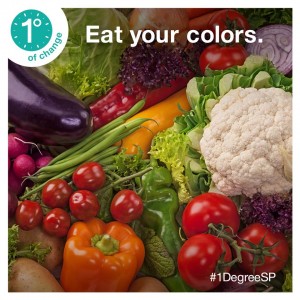 Every year, food manufacturers pour 15 million pounds of artificial food dyes into U.S. foods — and that amount only factors in eight different varieties, according to the Center for Science in the Public Interest (CSPI).
Every year, food manufacturers pour 15 million pounds of artificial food dyes into U.S. foods — and that amount only factors in eight different varieties, according to the Center for Science in the Public Interest (CSPI).
These dyes are so common in U.S. foods (especially kids’ foods) that parents don’t think twice about giving their children rainbow-colored cereal or fluorescent blue “juice,” and adults don’t consider bright orange cheese puffs out of the ordinary, either. You would probably do a double take if these food packages contained warnings detailing what these artificial food colorings may really be doing to your health, and that of your children
In the United States, however, consumers are still snatching up artificially colored “foods” with fervor, as most are completely unaware of the risks involved … and let me just say, hyperactivity in children is only the tip of the iceberg.
In their 58-page report, “Food Dyes: A Rainbow of Risks,” CSPI revealed that nine of the food dyes currently approved for use in the United States are linked to health issues ranging from cancer and hyperactivity to allergy-like reactions — and these results were from studies conducted by the chemical industry itself!
For instance, Red # 40, which is the most widely used dye, may accelerate the appearance of immune system tumors in mice, while also triggering hyperactivity in children. Blue # 2, used in candies, beverages, pet foods and more, was linked to brain tumors. And Yellow 5, used in baked goods, cereals, candies and more, may not only be contaminated with several cancer-causing chemicals, but it’s also linked to hyperactivity, hypersensitivity and other behavioral effects in children.
When I teach children (and adults alike) I tell them to “eat the rainbow.” It has somewhat become a catchphrase but it’s a simple way of reminding you that a variety of real wholesome fruits and vegetables in your diet will get you the vitamins and minerals your body needs to function optimally. And the good news is you can snack on most of them without having to cook them. So, quit the excuse that “you don’t have the time” for – the key here is to note that certain colors of food indicate an abundance of specific nutrients. For example, yellow and orange fruits and vegetables (citrus fruits, gourds, for example) are abundant in vitamins C and A. Green fruits and veggies (kale, spinach, asparagus, avocado) are high in vitamins K, B, and E. Purple produce on the other hand (eggplant, red cabbage, grapes) are high in vitamins C and K.
To summarize: Include at least a fruit and/or a vegetable with every meal and snack, ensuring you have incorporated each color of the rainbow pallet at the end of the day, and this will ensure you nourish your body with vital nutrients necessary for good health.
